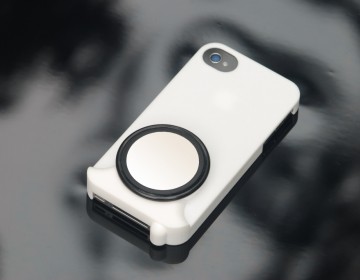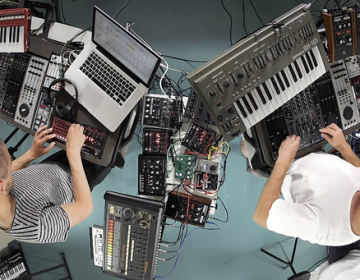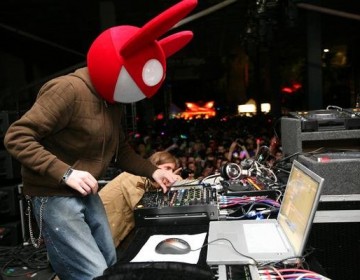Végétophone Brings Ableton Live to a Primary School

Primary education may be the very lastly considered implication of the proliferation of electronic music, when in fact it may deserve to be the first. In an era where math and science proficiency falters (at least in America), arts education may take a beating as standards and curriculums are overhauled. However, musician and artist-turned-teacher Louis Warynski, aka Chapelier Fou, recognizes the potential music and electronics have for stimulating and energizing young classrooms. As an artist-in-residence at L’école Jacques Prévert in Rennes, France, Warynski has brought his electronic music and programming prowess to help primary school students learn the mechanics of music.
Using Ableton Live and Max for Live, Warynski constructed Végétophone, an instrument and sound installation in his students’ classroom, featuring a number of variable controllers to play, adjust, and interact with new sounds and musical arrangements. The Végétophone, shaped like a tree, features three sections with different sound palettes, organized into apples, bananas, and limes.
The trunk of the tree controls global parameters, including including pitch, tempo, and time signature. The branches of the tree each have knobs that control volume, delay and reverb sends, and sound/kit selection. Each parameter on the tree is given its proper musical notation symbol, save for time signature, which Warynski adjusted into a more understandable beat and bar division than in the traditional fractional notation.
As far the circuitry and patching of Végétophone goes, the whole setup is much simpler than the back of the installed board seems.
Everything is done in Live 9 and Max for Live running on a Mac Mini and controlled in MIDI with the help of a MIDIbox 128i/o and an Arduino board.
Let’s start with the easy part:
- Sound selection is made by moving a chain selector in Racks.
- Major and minor selection applies a scale midi effect on ‘bananas’ and ‘apples’.
- Global transpose applies a pitch midi effect on ‘bananas’ and ‘apples’.
- Tempo is controlling… well, the tempo.
- Effects are just two return busses.
- Arpeggios are made with the Arpeggiator midi effect.
All the sounds are made with samples played by Racks of Simplers and Drum Racks. A few instances of Operator are used as well.

Described as “nothing more than a gigantic MIDI controller,” Végétophone is a superb example of a very simple, yet functional music education device. And it looks super fun to use.
Check out the interview with Chapelier Fou on Ableton, and listen to his releases on SoundCloud.






